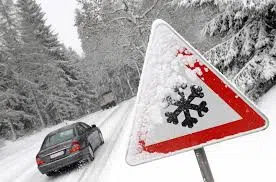Fresno – The California Department of Transportation (Caltrans) and the California Highway Patrol (CHP) encourage motorists to prepare for fog and reduced-visibility driving conditions on local roads and highways throughout the Central Valley.
Driving in winter weather — snow, ice, hail, fog, wet and cold — creates a greater challenge for vehicles and drivers. Keeping your vehicle in good technical repair and reducing driving speeds reduces your overall chances for any mishap or disaster while driving. The fog/winter driving season in the Central Valley typically begins during the month of November and continues through February. Tule fog accounts for more weather-related automotive casualties in California than any other weather condition.
To assist in slowing traffic speeds when visibility is less than 500 feet, the CHP will implement their Pace Program on major highways between Bakersfield and Modesto. Caltrans and the CHP want you to get to your destination safely as winter weather is never predictable; so we remind motorists to expect the worst conditions and always be prepared for the winter season by checking your brakes, windshield wipers, anti-freeze, exhaust system and heater/defroster to make sure they are all in good working condition.
Motorists are reminded to move over and slow down when approaching Caltrans equipment. Do not pass snow plows or sand trucks as its not only dangerous, but also against the law.
For the latest chain control information, visit www.quickmap.dot.ca.gov or call 1-800-427-ROAD.
WINTER DRIVING TIPS:
• Plan your driving trips in advance.
• Avoid driving when fatigued.
• Carry chains if traveling into the mountain areas and stay alert for chain control checkpoints.
• Check weather conditions for your travel route (and time) before you begin any trip.
• Plan your arrival time at a destination by taking into account any delays due to slower traffic, reduced visibility, accidents, etc.
• Inform someone of your route and planned arrival time.
• Choose warm and comfortable clothing. If you need to remove any layers of clothing, NEVER do so while driving.
• Warm up your vehicle BEFORE driving off. It reduces moisture condensing on the inside of the windows.
• NEVER warm up your vehicle in a closed garage.
• Carry a cell phone, charger, blankets, water and snacks.
• Buckle up before you start driving. Keep your seat belt buckled at all times.
• SLOW DOWN! – Posted speed limits are for ideal travel conditions. Driving at reduced speeds is the best precautionary measure against any misfortune while driving on slippery roads.
• Do not use cruise control. Winter driving requires you to be in full control at all times.
• Drive with low-beam headlights on. Not only are they brighter than daytime running lights, but turning them on also activates the tail lights. This makes your vehicle more visible.
• Lengthen your following distance behind the vehicle ahead of you. Stopping distance on an icy or wet road is double that of stopping on a dry one.
• Steer with smooth and precise movements. Changing lanes too quickly and while braking or accelerating can cause skidding.
• Use extra caution when crossing traffic or intersections during foggy weather.
• Be patient and pass other cars only when it is safe to do so.






